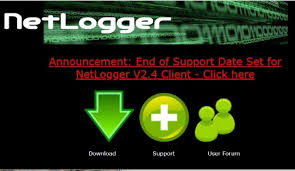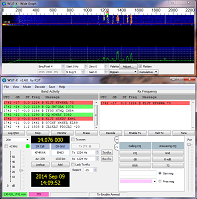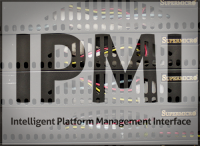Recently, an upgrade from FreeBSD 12.1 to FreeBSD 12.2 led me down a path to examine the process of updating the boot code on the boot disk. After reading several forum and email list posts about this issue, I decided to create a VirtualBox VM to test solutions before upgrading the zpool and disk boot code on my ThinkPad.
Continue reading “FreeBSD 12.2, UEFI, Zpool Upgrade and Updating Disk Boot Code”CQRLog Install on FreeBSD
There are several very good logging programs in the FreeBSD Package Repository such as KLog, Xlog, KB, and Yfklog but none of them are as feature rich as CQRLog in my humble opinion! Some amateur radio operators prefer simple logging programs, however, my preference is a logging program which can connect to other services such as qrz.com, eqsl.cc and Log Book of the World as well as other programs such as WSJT-X.
CQRLog uses MYSQL as the default backend database. Normally, installation of CQRlog from FreeBSD’s Package Repository would be straight forward. However, installing MySQL first, provides a little flexibility when installing CRQLog from the FreeBSD Package Repository.
Continue reading “CQRLog Install on FreeBSD”Changing a Let’s Encrypt Certificate’s Domains
Did you ever configure a piece of software or service and spend a great deal of time doing so, without documenting it, only have to modify it in the future. Let’s Encrypt is one of those pieces of software I had configured in the past and recently had to modify then spend an inordinate amount of time trying to figure out my initial configuration. This post is an attempt to piece together and document what is needed to update the domains in my Let’s Encrypt Certificate
Continue reading “Changing a Let’s Encrypt Certificate’s Domains”NetLogger Install using FreeBSD’s Linux Binary Compatibility
As an active Amateur Radio Operator, I utilize NetLogger on a daily basis. Nearly all of the Amateur Radio Applications I use have native FreeBSD packages with the exception of NetLogger. NetLogger is a Net Management Tool for Ham Radio. It’s a great QT Application available for Windows, MacOS, and Linux. NetLogger is available as a free application but the source code is not open source which is unfortunate. In any case, a Linux Binary and associated dependency libraries are available.
NetLogger can be downloaded at https://netlogger.org. I chose the Stable Version 3.1.5 Linux Tar Archive — 32 Bit.
Continue reading “NetLogger Install using FreeBSD’s Linux Binary Compatibility”FreeBSD and WSJT-X Configuration
Recently, I configured WSJT-X on my IBM ThinkPad running FreeBSD 12.1 with the Lumina Desktop. Although it’s working just fine, the road traveled was challenging to say the least. Enclosed are my notes on the actions needed to properly configure FreeBSD and WSJT-X on my Laptop.
For those not familiar with WSJT-X, it is amateur radio software for weak signal communications. Please follow the link for additional information regarding WSJT-X: https://www.physics.princeton.edu/pulsar/k1jt/index.html
Continue reading “FreeBSD and WSJT-X Configuration”Install TrustedQSL on FreeBSD
From the LoTW website, the Logbook of the World (LoTW) is an online service that enables you to:
- electronically submit contacts (QSOs) for confirmation
- view your submitted QSOs and resulting confirmations online
- view your DXCC, VUCC, WAS, WAZ and WPX award progress online
- electronically submit confirmations for credit toward DXCC, VUCC, WAS, WAZ and WPX awards
Although there are several services to log contacts such as QRZ and eQSL, LoTW is the Gold Standard of logging contacts in the author’s humble opinion!
Continue reading “Install TrustedQSL on FreeBSD”Avahi in FreeBSD
Introduction:
After installing CUPS, I noticed avahi-app was installed as a dependency. Also, while digging around a bit in /usr/local/etc/rc.d, I notice two files of interest: avahi-daemon and avahi-dnsconfd. As a result, I wanted to configure the Avahi on my system provide local hostname resolution using the hostname.local naming scheme as well as the discovery of avahi aware services.
Continue reading “Avahi in FreeBSD”MySQL 5.7 – Resetting root’s password
After several upgrades of MySQL on my FreeBSD 12.1 Server and, in particular, upgrading from MySQL 5.6 to MySQL 5.7 caused the MySQL 5.7 Server not to start. Reviewing the MySQL .err log file, I decided to remove all the data under /var/db/mysql! Of course, backups and snapshots were made. After removing the data structure under /var/db/mysql, one must re-establish MySQL’s root password thus prompting this post.
Although not a great source of inspiration or knowledge presented in this post, but it is more for my recollection in the future!
Steps for resetting your MySQL instance in FreeBSD 12.1:
root@xxx:/ # service mysql-server stop root@xxx:/ # cd /var/db/mysql/ root@xxx:/var/db/mysql # rm -Rf * root@xxx:/var/db/mysql # sysrc mysql_args="--skip-grant-tables" root@xxx:/var/db/mysql # service mysql-server start root@xxx:/var/db/mysql # mysql -u root root@localhost [(none)]> FLUSH PRIVILEGES; root@localhost [(none)]> ALTER USER 'root'@'localhost' IDENTIFIED BY 'new password'; root@localhost [(none)]> exit root@xxx:/var/db/mysql # service mysql-server stop root@xxx:/var/db/mysql # sysrc -x mysql_args="--skip-grant-tables" root@xxx:/var/db/mysql # service mysql-server start
Checking your password:
root@xxx:/var/db/mysql # mysql -u root -p Enter password: 'new password' root@localhost [(none)]> exit
Summary:
It’s not very often one should feel the need to wax your MySQL Instance, but if you do, ensure backup and snapshots of the data are taken first.
FreeBSD and RedShift – Blue Light Suppression
FreeBSD and Redshift:
Recently, I started using FreeBSD as my daily driver on my ThinkPad T480. Rather than bore you with installing and initially configuring FreeBSD, I rather focus on the small things that will make your experience much better using FreeBSD on the desktop. Continue reading “FreeBSD and RedShift – Blue Light Suppression”
FreeNAS Mini and ipmitool
FreeNAS Mini and ipmitool:
Recently, a Java update prevented the use of the Java KVM applet to enable a console session with the FreeNAS Mini IPMI backplane. Rather than jump through numerous hoops to change Java’s configuration files, ipmitool utility came to the rescue. Continue reading “FreeNAS Mini and ipmitool”









